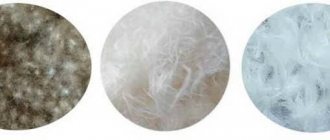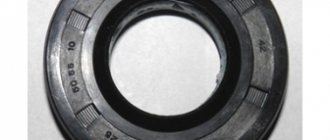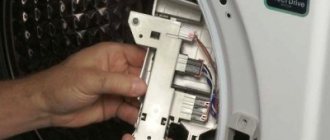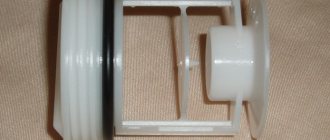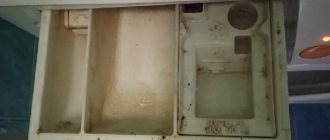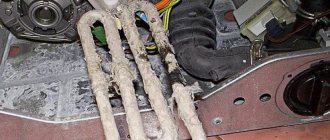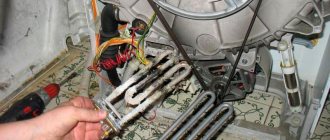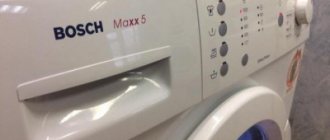Let's consider which material is better for the washing machine tank: stainless steel, plastic, steel or polynox. The choice of SMA depends not only on price, water and light consumption, but also on the materials from which the components are made.
An important part of the car is the tank. It affects the convenience and service life of the entire unit.
- Purpose of the SMA tank
- Stainless steel
- Plastic
- Metal
- Polynox
- Catalog of washing machines with reviews
Purpose of the SMA tank
The washing machine tank cannot be assessed visually when purchasing. Therefore, you need to immediately find out about the material from which it was made.
Polynox tank
Do not confuse the tank and the drum. The laundry is placed in the drum, and it is this drum that rotates during washing. Tank is the container where the drum is placed. Water and detergents are poured there. This mixture enters the drum through special holes through the pipe.
The tank takes on a lot of load. The water heats up in it, aggressive chemicals get into it, and some object may accidentally fall out of the drum. These factors can significantly accelerate the failure of a part. To prevent this from happening, you should take care in advance of choosing a car with a suitable tank.
Do you turn off the water tap after washing?
Oh yes! No.
The drum is made of stainless steel. Tanks are made from the following materials:
- stainless steel;
- plastic;
- metal;
- polynox.
Each of them has its own advantages and disadvantages and affects the price and life of the washing machine. If it breaks down, most often you have to replace the entire washing machine, so you should take your choice seriously.
Which washing machine tank material is better?
The washing machine tank is an automatic large container fixed in a certain way in the unit. All fastenings are movable. This is achieved thanks to special shock absorbers and springs. Special counterweights made of concrete are attached to the tank to reduce vibration during operation. Linen is loaded inside the part.
During operation, the tank is filled with water and synthetic detergents. Liquid enters the drum through the holes. The tank itself has perforations over its entire surface. The drum rotates at a specific number of revolutions per minute, the liquid interacts with the clothing. A wash, rinse or spin cycle occurs.
Stainless steel
The most expensive and durable material. It is assumed that a stainless steel tank can last at least 100 years. Of course, no one checked this, since no machine is capable of working that long.
Stainless steel tank
Stainless steel is valued for the following qualities:
- durability;
- impact resistance;
- not subject to corrosion.
The disadvantages include the machine being too noisy, its high price and high energy consumption. The hum occurs due to friction and knocking on the metal drum, as well as the low soundproofing properties of steel.
The price of the machine is determined by the cost and durability of the material. Water in a metal container cools down faster, you have to heat it up more often, and as a result, more energy is wasted. Significant weight of a part is also considered a disadvantage, but not always.
Expert opinion
I work in the household appliance repair industry. Extensive experience in restoring washing machines and dishwashers.
Ask a Question
Any washing machine repairman will tell you that the heavier the device, the better.
It should be remembered that stainless steel is an expensive material. With high-quality soldering, the price of the machine cannot be low. If a washing machine is offered at a very attractive price, it may turn out to be of poor quality and will not last long.
Stainless steel tanks are the most popular. However, finding them can be difficult. practices the use of stainless steel tanks. Many manufacturers most often use plastic or polynox to reduce the cost of their products.
Do you store laundry in the washing machine?
Oh yes! No.
Advantages and disadvantages of plastic tanks
— Plastic tanks are less susceptible to vibration when you wash. This also leads to a reduction in the noise level of the washing machine.
— Such tanks retain heat inside better. This eliminates the need to constantly heat the water. As a result, the washing machine's energy costs to heat water are reduced.
— Plastic is much lighter than metal. This reduces the weight of the washing machine and makes it easier to transport.
— Polynox and its analogues will not be damaged by moisture and will not rust, which leads to an increase in the period of its use.
— Plastic is cheaper than stainless steel. Cars with a plastic tank are cheaper compared to their metal counterparts.
Plastic is easier to damage. And while a stainless steel tank can survive impacts from hard foreign objects that accidentally enter the tank during washing, plastic can crack when hit at high speeds.
Please note: when your washing machine has a plastic tank, you need to check things very carefully. Damage from hard and sharp fittings is possible.
Also, when you repair the machine yourself or carelessly transport the machine, the plastic tanks may suffer from impacts.
If the transportation was carried out poorly, or you forgot to remove the special bolts before starting the machine, the integrity of the container may suffer. She will break. And nothing worse can happen. The car will simply become unusable. And then it will be necessary to replace the tank. Or you might even have to buy a new car.
However, manufacturers know what the shortcomings of their products are. That's why they are constantly improving the plastic formula. Modern laundry equipment is increasingly using plastic that is much stronger than that of their recent predecessors.
IMPORTANT! When the plastic is of high quality, then if you handle it carefully you can expect it to last for a quarter of a century.
Plastic
Quite a popular material. Has many advantages:
- easy;
- inexpensive;
- low thermal conductivity;
- does not create excessive noise;
- does not rust or leak.
Biggest drawback: fragility. Much easier to damage than metal. Most often this happens when moving.
It also happens that during washing, some object gets caught between the drum and the tub. In this case, the latter may crack. You will have to change the part or buy a new unit. Both will not be cheap.
Plastic tank
Gray plastic is considered the most unreliable. It quickly deteriorates, and you have to buy a new washing machine.
Types of drum perforation
Perforations are small holes on the surface of the drum through which water enters. The drum rotates during washing. Under the influence of centrifugal forces, the laundry is pressed into the perforation holes. This leads to rapid wear of things. Companies that produce washing equipment are trying to prevent laundry damage, so they are working to improve their equipment. This also applies to perforation parameters.
Each manufacturer uses its own types of perforation:
- Cellular. Such drums are produced by Miele. Perforation in the machines of this manufacturer is performed in the form of a honeycomb. The holes look like convex hexagons. The fabric in them is almost not tightened, i.e. the laundry is washed more carefully.
- Drip. Bosch produces drums with perforations in the form of drops. When the wool or silk mode is selected, the cylinder rotates in one direction, providing a delicate effect on items. If cotton or linen is loaded, the drum rotates in the other direction, providing more intensive washing.
- Pearl drum The pearl drum is produced by Hansa. The perforation in it is made in the form of hemispheres reminiscent of pearls. The manufacturer claims that thanks to this technology, wear of the laundry is prevented even at a drum rotation speed of 1400 rpm.
- Wave drum. The “wave” drum is a type of Pearl drum. The holes in it are also made in the shape of hemispheres. They bend in waves throughout the cylinder. The developer of this technology claims that such a drum improves the movement of laundry during washing. This allows you to get cleaner things. Wave drum prevents wear and tear of laundry.
- Diamond drum Machines with such drums are produced by Samsung. This technology differs in that the perforation holes are located in recesses made in the shape of a pyramid. The holes are small in size, preventing the fabric from being drawn into them.
Metal
Enameled steel was previously used as metal for tanks. This material is not very suitable for washing machines. When carrying or during washing, the surface may chip. Rust appears in this place, and later there is a hole and a leak.
For this reason, such tanks are not currently produced. They are only found in old cars. If the tank in such a device leaks, practically nothing can be done. Alternatively, use a welding machine. But such a decision is very controversial. It's better to buy a new car.
Expert opinion
I work in the household appliance repair industry. Extensive experience in restoring washing machines and dishwashers.
Ask a Question
But with careful use, enameled steel lasts for many years. Some machines with parts made of this metal are still washed for their careful owners.
Features of stainless steel tanks
— Stainless steel is a very durable material. The body of the machine is more likely to start rusting than its drum.
— Stainless steel tanks are very durable. It is difficult to damage them.
— Stainless steel tanks are not afraid of high temperatures. They cannot be damaged by aggressive chemicals.
— Metal is not as favorable a medium for reproduction and microbes as plastic. You won't see mold or mildew on them.
- High price. At the same time, of course, you need to remember that there are also inexpensive washing machines that have stainless steel tanks. The problem is what kind of steel is used. If it is of low quality, then most of its advantages are lost.
— Metal has higher heat transfer. The water cools down faster. The machine has to warm it up again and again. Electricity bills are getting higher. The heating element is severely worn out.
— Strong vibration not only during washing, but also during spinning. After all, everyone knows well how noisy and moving such washing machines are when you spin or rinse.
Keep in mind that not all metal tanks are made of stainless steel. Sometimes there is spraying. And it can deteriorate over time.
IMPORTANT! Sooner or later, chips appear on enamel tanks. This is how solid elements of clothing act. And corrosion leads to further rust and leaks.
Polynox
Polynox tank
One of the most popular materials, which includes polypropylene and calcium carbide. Has the same advantages as plastic. In addition to polynox, there are other similar substances. They differ slightly in composition and are called composite materials.
The varieties are as follows:
- carferon;
- carborane;
- silytek;
- carbotek.
Depending on what the manufacturer added to the composition, the quality of the resulting substance will differ. For example, carborane is stronger than polynox. But since there are no significant differences, composite materials for tanks are considered together.
Products made from polynox can last until the end of the life of the washing machine. Each manufacturer is trying to develop more and more durable polymer options. Some of them already have the properties of both plastic and metal. Such parts do not break down for up to 30 years.
So, now the most popular materials for making washing machine tanks are stainless steel, plastic, polynox and its variations. The choice is determined by a person’s finances and living conditions. If you move frequently, there is a high probability of damaging the plastic tank. But it is lighter, cheaper and less noisy. And yet, experts do not recommend looking at the material first.
Power consumption, brand, and technical characteristics are considered more important. The easiest way is to select several cars with suitable functions, price and country of origin, and from them choose the best one with the required tank.
Polynox, carboran and silytek - what is it?
All of the materials listed are polymers. They are very similar, but differ in some operational characteristics.
Polynox
In the very name “polinox”, buyers hear the “taste” of plastic. And their intuition does not deceive them, this is indeed one of the polymers - polypropylene. After adding some additives to it, it slightly changes its characteristics and transforms into polynox. This material contains additives that help reduce vibration of the drum and increase its thermal insulation properties.
In automatic washing machines (AWA), this polymer is used to make the most important structural element - the tank. Today, plastic tanks have become widespread, due to the advantageous properties of the material. It is cheap, easy to process, and parts made from it have excellent performance characteristics.
There are other polymers used in the production of SMA. Each manufacturer includes different additives in the plastic, so the names of the polymers may differ. So, polynox has a similar analogue - polyplex. It is not afraid of high temperature, corrosion, water, and ensures the device is silent. Polyplex conducts heat well, which saves energy. But like all plastics, this material is quite fragile.
Carborane
This composite material is Electrolux's own development. It is more reliable than polyplex. Compared to the latter, carborane is less brittle. It costs 1.5 times more than other polymers.
Benefits of carboran:
- practically does not absorb odors;
- is a dielectric, therefore safe;
- withstands mechanical and chemical loads;
- saves energy due to high thermal insulation properties;
- good sound insulator - reduces noise during operation of the SMA.
Silitek
This composite material is almost similar to polynox. It is developed by Candy Hoover Group. Its properties are similar to basalt - a natural stone of volcanic origin, resistant to alkalis and acids, and dolomite - a natural mineral, moisture-resistant, but fragile. Silitek is resistant to heat and has good sound absorption. Has excellent heat-insulating properties.
Plastic version
Which drum will do? Each company has a special one. All types of plastic used have their own characteristics. For example, carboran is close to stainless steel in terms of qualities such as durability, strength, and reliability. But its properties are surpassed in terms of thermal insulation and vibration reduction.
The main polymer materials are: carborane, carbotek, carferon, silytek and polynox.
For all of them, the main substance is a special polypropylene. It contains calcium carbide. It significantly improves the strength of the material and its resistance to detergents. The fewer different added elements in the plastic, the worse the plastic tank.
Advantages of plastic
- Does not corrode.
- Good in terms of durability.
- Modest mass.
- Does not absorb water.
- Reduces noise during drum rotations.
- Saving electricity consumption.
- Resistance to aggressive chemical elements.
Which is better to choose? Despite the existing strengths, modifications with plastic options, when compared with steel versions, break more often and are not resistant to mechanical influence. But today the development of plastic composition does not stop. And each company adds its own “zest” to this material. In this way, these plastic components of the machine gradually develop their strength and reliability. And when solving the dilemma of how appropriate a plastic container is in this technique, the answer is more positive. It is also worth noting the low cost of this material. And modern manufacturers are motivated to reduce the cost of devices with plastic tanks.
Features and purpose
Many washing machine owners mistakenly assume that the tank and drum are the same part in household appliances. A drum is a container into which dirty things are placed. It is always made of stainless steel. Tank is a container for the drum. Liquids, powders, conditioners and other laundry detergents are poured into it.
All this enters the drum through special pipes.
Tanks are:
- collapsible;
- non-separable.
The former consist of two halves connected to each other using fasteners, while the latter are a one-piece, non-separable structure.
The tank is an important part in any washing machine. Water is poured into it (depending on the machine model, from 30 to 60 liters). To avoid strong vibration during washing, spinning and rinsing, the tank is not rigidly attached to the body. To soften vibrations, springs are located in the upper part, and a shock-absorbing system is located in the lower part. For these purposes, manufacturers also install concrete counterweights on containers.
The washing machine tank takes on a colossal load. Water is heated in it, chemically aggressive laundry detergents enter here, and it can withstand sudden temperature changes. Therefore, the quality and durability of this part will depend on the type of raw materials used in the production of tanks. Let's look at the most popular materials used by manufacturers.
Features of the enamel coating of tanks
The version of models with enameled metal has its own characteristics. Both positive and negative.
POSITIVE SIDES
— Works reliably, even if you place any laundry. — Enamel is a protective layer that prevents corrosion from appearing on the metal.
What material are the containers made of stronger? There is no clear answer to the question. During transportation, it is almost impossible to damage models with enameled metal. They do not crack even with large temperature changes.
NEGATIVE SIDES
- An impressive mass. — The container is defenseless against impacts.
Long periods of use lead to chips appearing on the enamel container. This is caused by impacts from foreign objects. The enamel begins to crumble in areas where there is damage.
IMPORTANT! Once the protective layer disappears, rust quickly covers the metal, leading to complete destruction. Some time will pass and you will begin to worry about leaks. In this situation, you need to replace the tank or buy new equipment.
We emphasize that containers from this option are practically no longer produced. As it turned out, there were too many accidents when using them. And in the production of tanks they began to use plastic or a stainless steel base.
Let's consider which material is better for the washing machine tank: stainless steel, plastic, steel or polynox. The choice of SMA is an automatic washing machine.
“>SMA depends not only on price, water and light consumption, but also on the materials from which the components are made. An important part of the car is the tank. It affects the convenience and service life of the entire unit.
Which one is better to choose?
Of course, a stainless steel tank is considered the most reliable, durable and durable. But at the same time it makes noise when washing, weighs a lot and affects the final cost of the washing machine. A plastic container is lighter and cheaper. Manufacturers are increasing the quality of plastic every year by adding substances to the raw materials that increase the strength and wear resistance of the plastic tank. However, those who move frequently are still recommended to give preference to models with containers made of stainless steel or carbotek (this material is approximately 1.5 times stronger than polynox).
Do not be afraid of new technologies and refuse to purchase washing machines with plastic or polymer tanks.
These are not the worst options, since they have many more advantages than disadvantages. Plastic tanks can last at least 30 years, and this is quite enough, since many people change their cars after 5-10 years after intensive use. To increase the durability of this part in household appliances, extreme care should be taken when transporting the washing machine, and also carefully check the pockets of clothing before washing.
See the video below about the disadvantages of a non-separable tank.
Source
